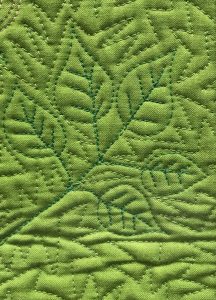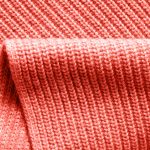The Simple Beauty of Whole Cloth

Elaborate techniques and fabric colors and patterns have dominated trends for a number of years now, but in 2019, the movement towards minimalism and tidying up allows us to go back to basics. Expect to see more whole cloth that showcases a single fabric and lets the quilting take center stage.
The basic definition of a whole cloth quilt is any quilt made of a single length of extra-wide fabric. The quilting stitches themselves form the design elements of the quilt. Whole cloth quilts are perfect for special fabrics you just can’t bear to cut apart. They’re fun to make and can also be a great way to practice your machine quilting. They also make a durable and beautiful baby gift.
Early whole cloth quilts were called “linsey-woolsey”. This name was coined from the village of Lindsay in Suffolk, England, where fabric consisting of linen warp threads and wool weft threads was first made. This was one of the first quilting styles brought to America by European immigrants. Even though the fabric was rather rough and coarse, colonists favored it due to its warmth and strength. Early Amish quilts were whole cloth, and the beauty of their solid white or colored designs comes from elaborate, closely quilted lines that bring texture and shadows to the piece.
Quilting these intricate quilts required highly skilled needlework. The designs on these quilts were often floral combined with feathered and geometric patterns. Some even included figures of ships, animals or people. Today’s whole cloth designs can draw inspiration from anywhere you like, bringing together modern textile art and history.
Here are some tips for getting started:
Pick a high-quality fabric
Since the fabric is the backbone of the quilt, using a quality fabric is key. Keep in mind how it will behave, given your plan for hand or machine stitching.
Determine your design’s focal point
When it comes to quilting any quilt, not just a whole cloth quilt, it’s important to decide where you want the visual focus of the finished product to be. The center may be the most obvious choice.
Have fun with fillers and contrasting designs!
To give your whole cloth a slightly unexpected look, try using quilting designs in slightly different ways. Try designs of different shapes and densities that stand out from each other.
Let us know if you decide to try your hand at this classic quilt! We love to talk quilts, and we love comments.




